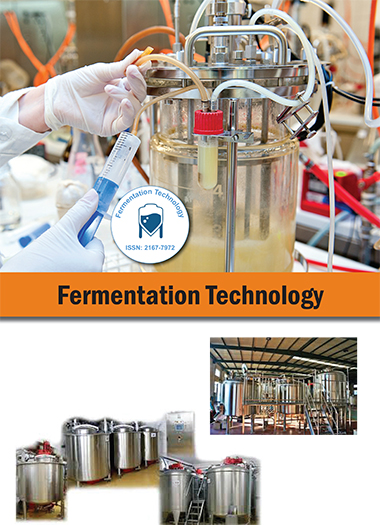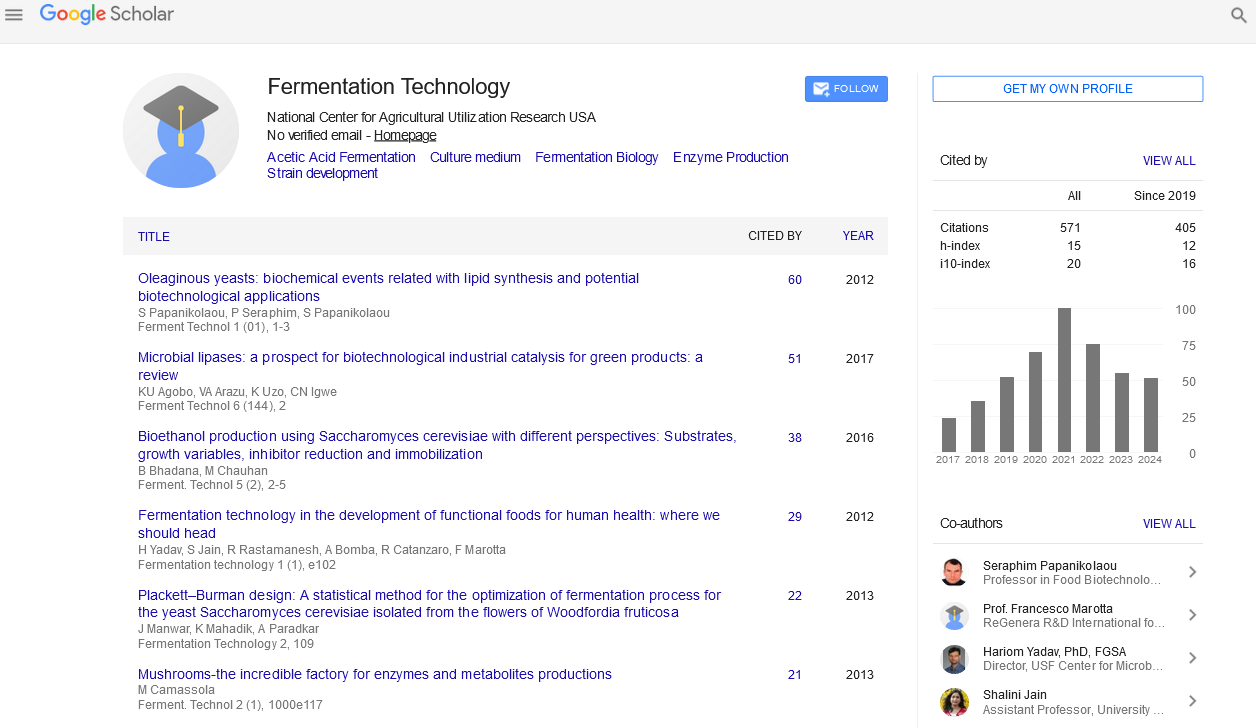Indexed In
- Open J Gate
- Genamics JournalSeek
- Access to Global Online Research in Agriculture (AGORA)
- RefSeek
- Hamdard University
- EBSCO A-Z
- OCLC- WorldCat
- Publons
Useful Links
Share This Page
Journal Flyer

Open Access Journals
- Agri and Aquaculture
- Biochemistry
- Bioinformatics & Systems Biology
- Business & Management
- Chemistry
- Clinical Sciences
- Engineering
- Food & Nutrition
- General Science
- Genetics & Molecular Biology
- Immunology & Microbiology
- Medical Sciences
- Neuroscience & Psychology
- Nursing & Health Care
- Pharmaceutical Sciences
Evaluation of different sources of Saccharomyces cerevisiae to binding aflatoxin B1
World Congress on Beneficial Microbes: Food, Pharma, Aqua & Beverages Industry
August 25-27, 2015 Valencia, Spain
Bruna Goncalves, Bruna Ferrari, Roice Rosim, Carlos Oliveira and Carlos Corassin
University of SÃ?Â?o Paulo, Brazil
Posters-Accepted Abstracts: Ferment Technol
Abstract:
Mycotoxins are a result of secondary metabolism of molds, have high toxicity, low molecular weight and are thermally stable. The presence of mycotoxins in foods is a serious problem from both a public health concern and for industry and consumers because of the reduced quality of the food. Aflatoxins are a group of carcinogenic mycotoxins that can cause acute and chronic intoxications in humans and animals. Aflatoxin B1 (AFB1) is the most potent of the aflatoxins. The ability of four different sources of Saccharomyces cerevisiae (autolyzed yeast, beer yeast, cell wall yeast and inactivated yeast) to binding aflatoxin in in vitro studies was carried out by studying their adsorption isotherms. The data showed that between times 10, 20 and 30 minutes, the best result was at 20 minutes, for all of the yeast products. The yeast product that showed the greatest binding was the cell wall yeast (83.90%), followed by autolyzed yeast (79.61%), inactivated yeast (74.45%), and beer yeast (30.00 %). The reducing percentage values were also significant at 10 and 30 minutes time and the best decontamination percentage were shown at 10 minutes time. Differently from the 20 minutes time, at the time of 10 minutes the inactivated yeast presented the highest reducing capacity (73.80%), followed by the brewerys co-product (68.43%) and the yeast cell wall (65.55%). The autolyzed yeast showed the lowest reducing percentage (48.11%).
Biography :
Bruna Gonçalves has a degree in science and food technology, and currently makes Master degree at the University of São Paulo.
Email: brunaleonelg@usp.br

